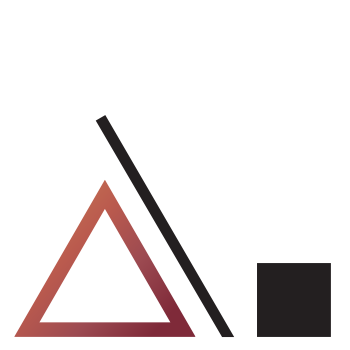 |||
|||

Fulcra
By RYAN J. A. MURPHY
 A presentation from Peter Jones and I at RSD9, virtually in Ahmedabad, India. Review the working paper. Check out the slides ▵
→
A presentation from Peter Jones and I at RSD9, virtually in Ahmedabad, India. Review the working paper. Check out the slides ▵
→
In what appears to be something of a purposeful dark pattern, the only thing differentiating ads and search results is a small black-and-white “Ad” icon next to the former.
Hrm. The resulting change seems to work:
Early data collected by Digiday suggests that the changes may already be causing people to click on more ads. […] According to one digital marketing agency, click- through rates have already increased for some search ads on desktop, and mobile click- through rates for some of its clients increased last year from 17 to 18 percent after similar changes to Googleʼs mobile search layout.
Damn. I may start looking for a new search engine.
 Tiago Forte's PARA system is a popular new approach to organizing your digital materials. I explain its usefulness with reference to some principles from systemic design. ▵
→
Tiago Forte's PARA system is a popular new approach to organizing your digital materials. I explain its usefulness with reference to some principles from systemic design. ▵
→
We find that high-, medium-, and low-engagement-state gamers respond differently to motivations, such as feelings of effectance and need for challenge. In the second stage, we use the results from the first stage to develop a matching algorithm that learns (infers) the gamer’s current engagement state “on the fly” and exploits that learning to match the gamer to a round to maximize game-play. Our algorithm increases gamer game-play volume and frequency by 4%–8% conservatively, leading to economically significant revenue gains for the company.
As ever with this kind of mechanism, are we sure we want this to exist..? The potential is no doubt powerful. Imagine interactive TV shows that modulate what they’re presenting based on readings of the viewer… Hrm.
The halo effect is essentially how positive—but irrelevant—traits influence our perception of what the thing with the halo actually says or does. These authors explored how charities manifest the halo effect on their websites, and find evidence for four varieties of halo effect.
this study employs charity websites as a multi-attribute donation channel consisting of three attributes of information content quality (mission information, financial information, and donation information) and four attributes of system quality (navigability, download speed, visual aesthetics, and security). Based on the proposed framework, this study proposes four types of halos that are relevant to charity website evaluation —collective halo (attribute-to-attribute), aesthetics halo (attribute-to- dimension), reciprocal-quality halo (dimension-to-dimension), and quality halo (dimension-to-dimension)
 A thought-terminating cliché limits conversation by capturing a complex (but potentially debatable) subject within a reductive term or phrase. ▵
→
A thought-terminating cliché limits conversation by capturing a complex (but potentially debatable) subject within a reductive term or phrase. ▵
→
 Based on the Applied Systems Thinking workshop, I’ve collected a variety of resources to help you map complex problems below. The buttons link ▵
→
Based on the Applied Systems Thinking workshop, I’ve collected a variety of resources to help you map complex problems below. The buttons link ▵
→
 A paper presented at RSD7 in Turin, Italy. I argue that an under-emphasized but crucial variable of success in systemic design is the ▵
→
A paper presented at RSD7 in Turin, Italy. I argue that an under-emphasized but crucial variable of success in systemic design is the ▵
→
 Applying graph theory to understand the structure of complex problems ▵
→
Applying graph theory to understand the structure of complex problems ▵
→
 A systems model I helped visualize for the Global Steering Group on Impact Investment in 2018 ▵
→
A systems model I helped visualize for the Global Steering Group on Impact Investment in 2018 ▵
→
Here is one thing I gained from this Analysis. At times we encounter ‘a Code problem’ partly caused by ′ a workflow problem’ and partly caused by ‘a Design problem’ .
We may do a CODE patch fix for time being (ex. production bug), but having it documented as ‘40% Workflow problem, 60% Design problem’ will help to consolidate all these ‘contributing percentages’ to come up with permanent fixes at a Later time.
— Mastering Programming Hacker News In 2015, I supported Kinetic Café in developing OCAD University’s latest Vision and Mission statements. As part of that work, I helped scan for ▵
→
In 2015, I supported Kinetic Café in developing OCAD University’s latest Vision and Mission statements. As part of that work, I helped scan for ▵
→
When designers center around the user, where do the needs and desires of the other actors in the system go? The lens of the user obscures the view of the ecosystems it affects.
’[…] The experience for a Sprig customer is super convenient, almost magical; the experience for a chef or courier…? We don’t know. We don’t get to know. We’re just here to press the button.’
For users, this is what it means to be at the center: to be unaware of anything outside it. User-Centric Design means obscuring more than it surfaces.
— Kevin Slavin, Design as Participation. From the shiny new MIT Journal of Design and Science.Mike Monteiro, “Why you need design”. (https://medium.com/@monteiro/why-you-need-design-77dce41e0e0c)
A little weird and very clever.
Mike Monteiro, “Why you need design”. (Again: https://medium.com/@monteiro/why-you-need-design-77dce41e0e0c)
I’m really interested in this “dichotomy”. I like Mike’s emphasis on the non-art of design: to him, it is a practice.
“A good designer behaves like a skilled professional with analytical, persuasive, creative, and social skills. You can count on them to solve problems, present good work in a timely manner, be accountable, and argue from an informed point of view.” - Mike Monteiro
 And I agree with him wholeheartedly. Yet, working with artists and contemporary art at Eastern Edge over the last few weeks has led me to a great appreciation of contemporary art, and the capacity of art to do… well… something.
And I agree with him wholeheartedly. Yet, working with artists and contemporary art at Eastern Edge over the last few weeks has led me to a great appreciation of contemporary art, and the capacity of art to do… well… something.
I guess that’s sometimes the point: art doesn’t necessarily achieve an intentional goal. Design does. Or rather, it should.
[Contemporary] Art can be designed.
However, art can be designed. But can design be contemporary art? What would that mean?
Off-the-cuff, it would mean that the design pushes contemporary boundaries. It would make you think about something you hadn’t thought you’d think about. Or, it would make you feel something you hadn’t felt before. Or that you feel a lot.
However, design still can’t be self-expression. By definition, it is intentionally the expression of something else—the expression of a solution to a problem, perhaps. Design can be art, but it shouldn’t necessarily try to be.
(Aside: I’m reminded of instantiation validity. A design is a version of a solution to a problem, but if it fails, we should remember that a design is distinct from the theoretical solution, and that the design can fail separate from the solution itself. This is convoluted, but it means we can try the same solution with a different design.)
 This is absurd. With everything that’s happening in the world (see the list with a bluish background from Wikipedia), why are half of Facebook’s ▵
→
This is absurd. With everything that’s happening in the world (see the list with a bluish background from Wikipedia), why are half of Facebook’s ▵
→
Ryan J. A. Murphy
ryan@fulcra.design
ryanjamurphy
Canada
Memorial University of Newfoundland
fulcra.designHelping changemakers change their worlds through systemic design and with innovation, leadership, and changemaking education.

